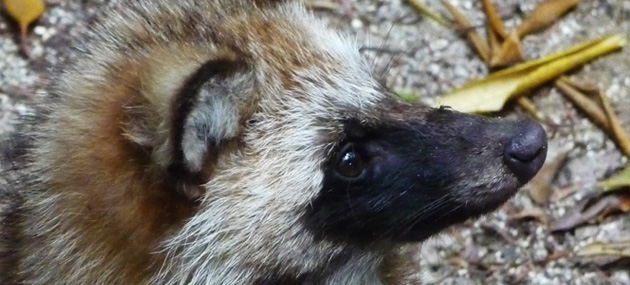Niigata Prefecture
-
Fukushimagata & Sakata
-
Hyoko
-
Sado Island (Sadogashima)
Japan, in winter, is home to several million ducks, geese and swans which move south in October and November from their breeding grounds in Siberia and the Russian Far East before spreading out across the Japanese archipelago. Most of the concentrations of these birds are in Hokkaido or on Honshu, but smaller numbers of ducks winter in Shikoku and Kyushu, and sometimes geese and swans even get as far south as Okinawa and other southwestern islands – Greater White-fronted Goose, Greylag Goose, Bean Goose and Swan Goose have even been recorded on Okinawa main island!
Vast numbers of geese migrate through Hokkaido, where they rest at ornithologically important staging areas such as Sarobetsu in the north, Miyajima-numa in the centre, Lake Utonai, near Tomakomai, the Tokachi Plain, Lake Tofutsu east of Abashiri, Lake Shirarutoro northeast of Kushiro and Lake Furen, near Nemuro. As autumn progresses into winter, these birds move south or southwest and fan out across central and northern Honshu, to places such as Izunuma in Miyagi Prefecture, the Ogata region of Akita Prefecture, Lake Shinji in Shimane Prefecture and, in Niigata Prefecture, Fukushimagata and Sakata, east and west of Niigata City, respectively.
Fukushimagata and Sakata 福島潟 佐潟
During the cold winter months along the Sea of Japan coast, Fukushimagata, about 20 km east of Niigata City, attracts several hundred Taiga Bean Geese, as well as both Whooper Swans and Bewick's Swans. There is always a wide variety of ducks to be seen, including such sought-after species as Smew, Baikal Teal and Falcated Duck.
In turn, the sheer number of birds there during mid-winter attracts an equally impressive range of raptors, and up to 10 speciesmay be seen in a day. White-tailed Eagle, Rough-legged Buzzard, Northern Goshawk and Eastern Marsh Harrier are just some of the different species that can be seen.
There is a small visitor centre at the site and the rangers have up-to-date information about birds which have been seen.
Nearby is Ganbaresha (雁晴れ舎), a birdwatching hide (with toilet facilities and a car park) which offers extensive views over the whole area. The open roof is a great place from where to watch the ducks and geese. Across the water, a dead tree often serves as a lookout and roosting site for White-tailed Eagles.
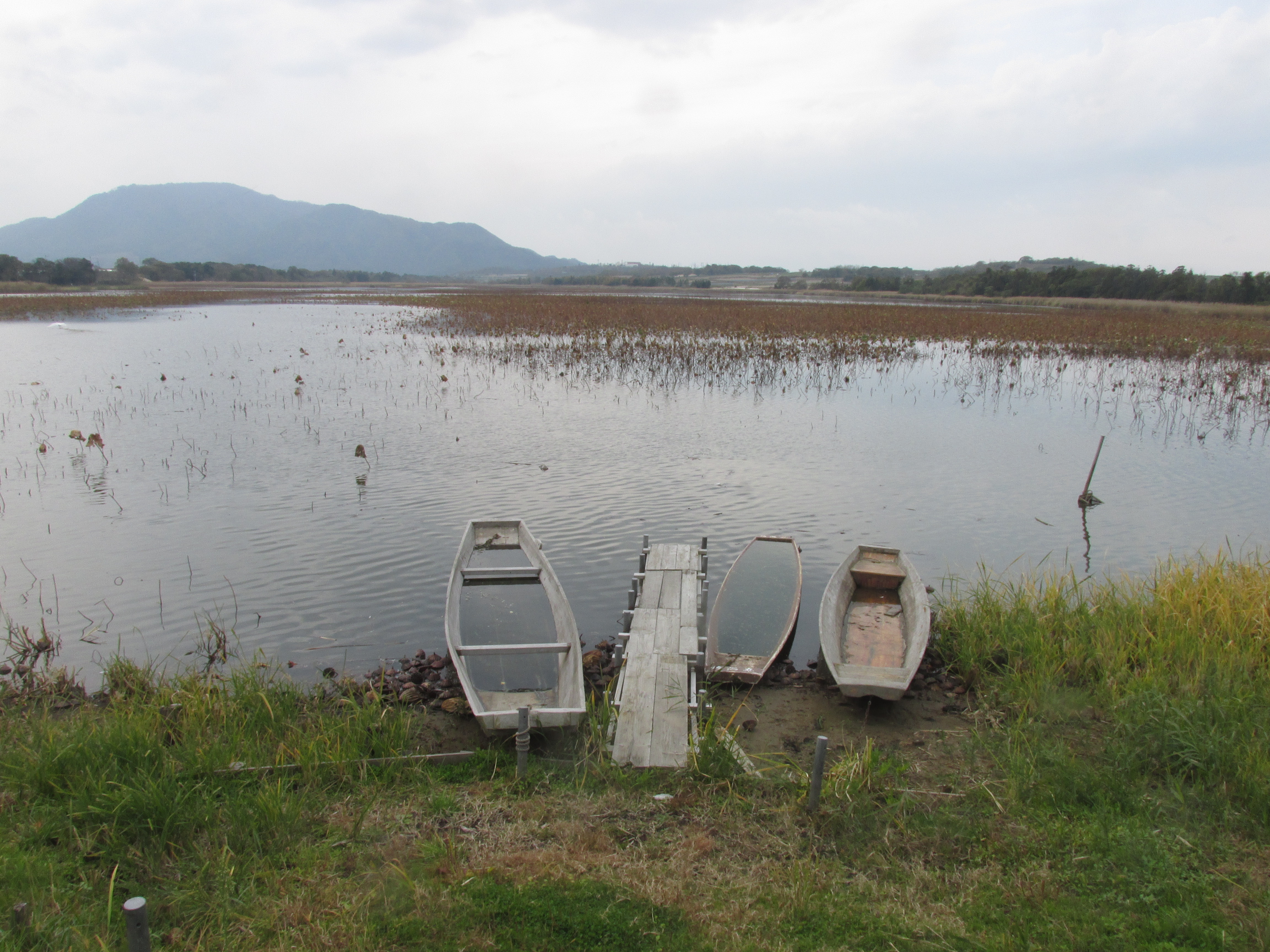
An additional site, on the west side of Niigata City, is Sakata. This large lake is surrounded by rice paddies that serve as a feeding area for Bewick's Swans and geese. Greater White-fronted Geese are the commonest, and in recent years, Sakata has attracted a small – but growing – winter population of Cackling Geese and Lesser Snow Geese. A few years ago a wayward Japanese Crested Ibis appeared here from the released captive-bred population on Sado Island, off the coast of Niigata Prefecture.
In mid-winter there are several thousand duck on the lake, so a close examination is likely to turn up something of interest – Smew, or Baikal Teal, and perhaps even a Baer's Pochard, which have occasionally been recorded here.
Note, however, that from the observation centre, you will be looking towards the west, and from mid-afternoon onward the distant birds on the lake are nothing more than silhouettes. Morning is definitely the best time to scan through the duck flocks.
Access:
For Fukushimagata, drive east on Route 7 (or the Nihonkai-Niigata expressway) from Niigata City. At
Toyosaka, turn south onto Route 46, drive southeast for about 4 km, then change onto Route 254. Fukushimagata is signposted on Route 46 soon after coming off the expressway.
To reach Sakata, follow Route 116 (Niigata-nishi bypass) west out of Niigata City, then turn right onto Route 46, and right again onto Route 2. Along Route 46, check any flocks of geese for rarities such as Cackling Goose, Lesser Snow Goose or even Swan Goose.
Around Niigata Station there are many reasonably priced business hotels, as well as car hire companies.
Express trains from Osaka (via Kanazawa or Toyama) and Tokyo will take you to Niigata City, and there are regular shinkansen line trains operating between Tokyo and Niigata City.
There are also night buses between the two cities, which are much cheaper than trains.
Niigata Kotsu: http://www.niigata-kotsu.co.jp/~noriai/highway-bus
Willer Bus: https://willerexpress.com/st/3/en/pc/bus/route/tokyo/niigata
Niigata tourist information: http://enjoyniigata.com/english
Train information in English: http://www.hyperdia.com/en
Map:
Fukushimagata 37.910978, 139.247511
Sakata 37.816371, 138.874142
Fukushimagata birdwatching hide 37.912954, 139.248312
Information:
Fukushimagata: http://www.pavc.ne.jp/~hishikui/index-e.html
Tel: 025-387-1491
Sakata (in Japanese): https://niigata-kankou.or.jp/spot/10806
Tel: 025-264-3050
Hyoko 瓢湖
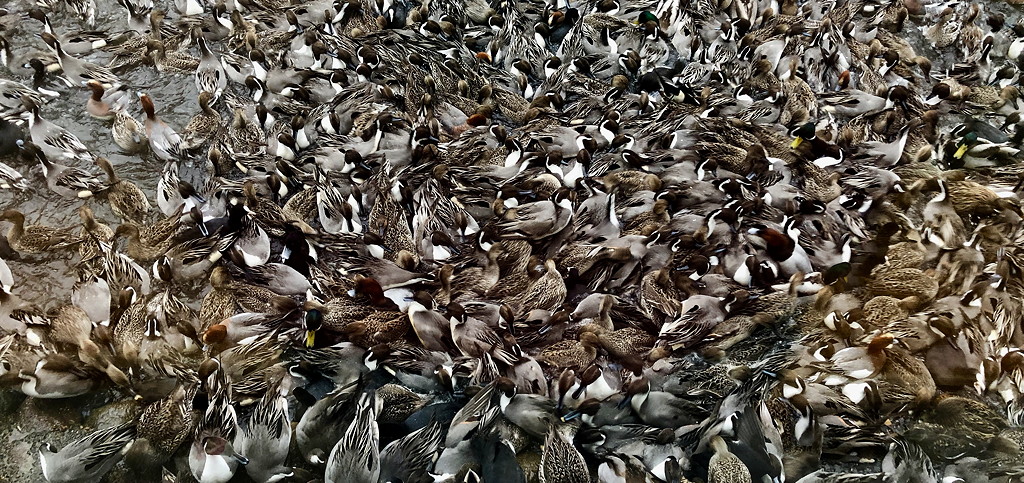 Not far from Fukushimagata is Lake Hyoko, in Agano City, another winter birding destination hosting more ducks and more swans.
Not far from Fukushimagata is Lake Hyoko, in Agano City, another winter birding destination hosting more ducks and more swans.
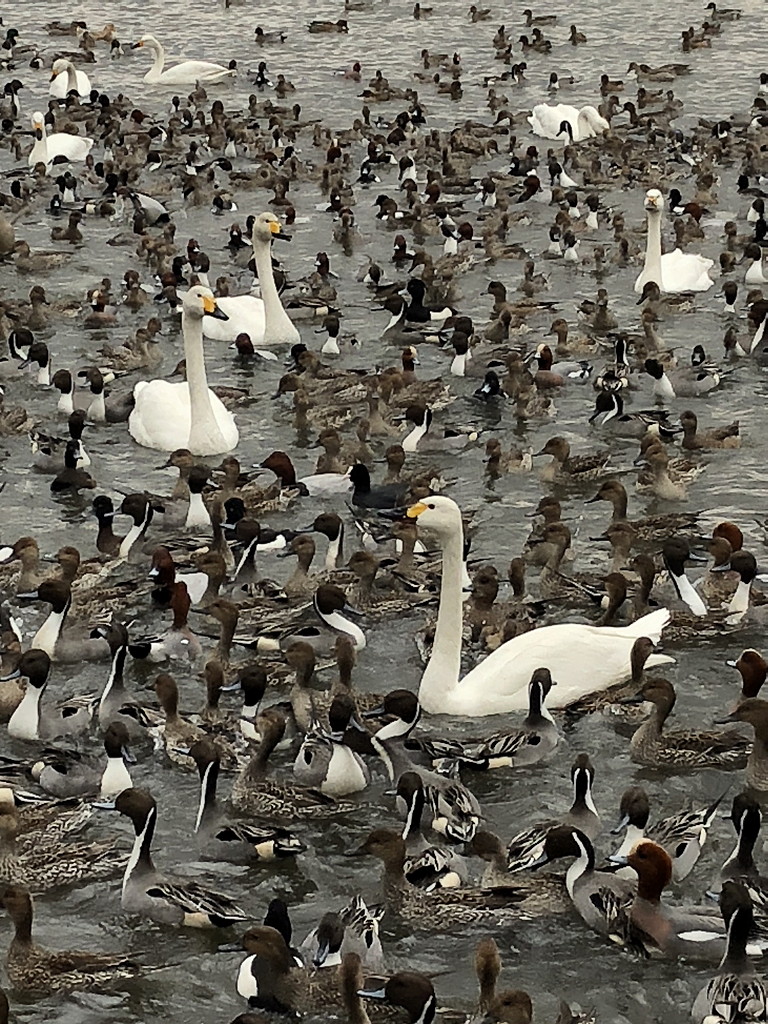 As many as 7,000 Bewick's Swan have visited this Ramsar-designated site on autumn migration, during late October and November, and several hundred stay for the winter, too. There are usually a few Whooper Swan mixed in with them too.
As many as 7,000 Bewick's Swan have visited this Ramsar-designated site on autumn migration, during late October and November, and several hundred stay for the winter, too. There are usually a few Whooper Swan mixed in with them too.
With birds being fed a couple of times per day, thousands of ducks converge on the lake and when it is feeding time the corner by the visitor centre is literally carpeted with ducks. They can be so abundant that it is not possible to see water between them, and they climb over each other's backs in a race to obtain food.
The commonest species, numbered in the thousands, are Northern Pintail, Eurasian Wigeon, Tufted Duck and Common Pochard. There are usually a few Smew or Goosander further out in the middle of the lake, and a careful search may reveal a Baikal Teal, a scarce winter visitor, among them. Rarities here have included Green-winged Teal among the Eurasian Teal, and Lesser Scaup.
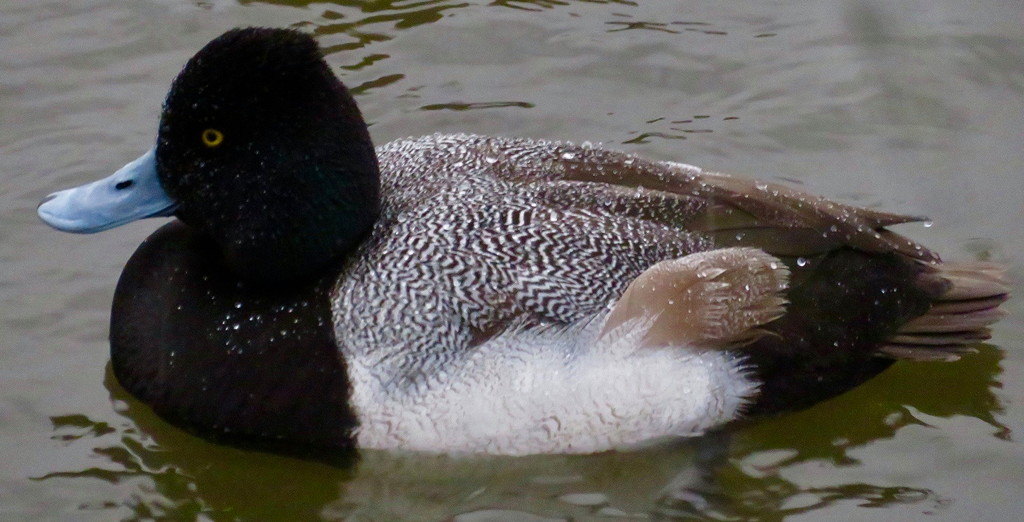 Access:
Access:
Hyoko (37.838391, 139.237447) is about a 20-minute drive from the visitor centre at Fukushimagata. If you are arriving by train, get off at Suibara Station, on the Uetsu Main Line, and walk for about 30 minutes to the lake.
There is a small information centre (Tel.: 0250-62-2690) at the lake, and also a car park and toilet facilities. There are food stores and convenience stores nearby.
Sadogashima, Niigata Prefecture 新潟県佐渡ヶ島
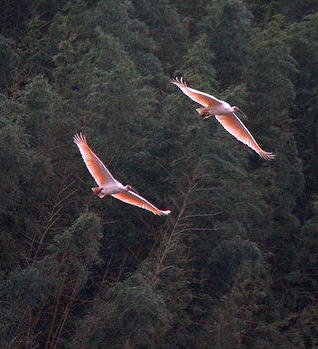 The island of Sado (Sadogashima), located in the Sea of Japan off Niigata Prefecture, is the last stronghold of the endangered Crested Ibis (Toki) in Japan. This is perhaps the most iconic of all Japanese birds given that in its scientific name, Nipponia nippon, both the generic and specific names commemorate Japan.
The island of Sado (Sadogashima), located in the Sea of Japan off Niigata Prefecture, is the last stronghold of the endangered Crested Ibis (Toki) in Japan. This is perhaps the most iconic of all Japanese birds given that in its scientific name, Nipponia nippon, both the generic and specific names commemorate Japan.
The Crested Ibis was formerly widespread over much of China, the Korean Peninsula, Japan and Far Eastern Russia, by the mid-20th century only a handful of ibis were left in the wild. Reasons for their decline included hunting, habitat loss and, especially, environmental pollution.
The last few surviving Japanese birds were taken into captivity on Sado Island and, with the help of birds loaned from China, a successful breeding program was started.
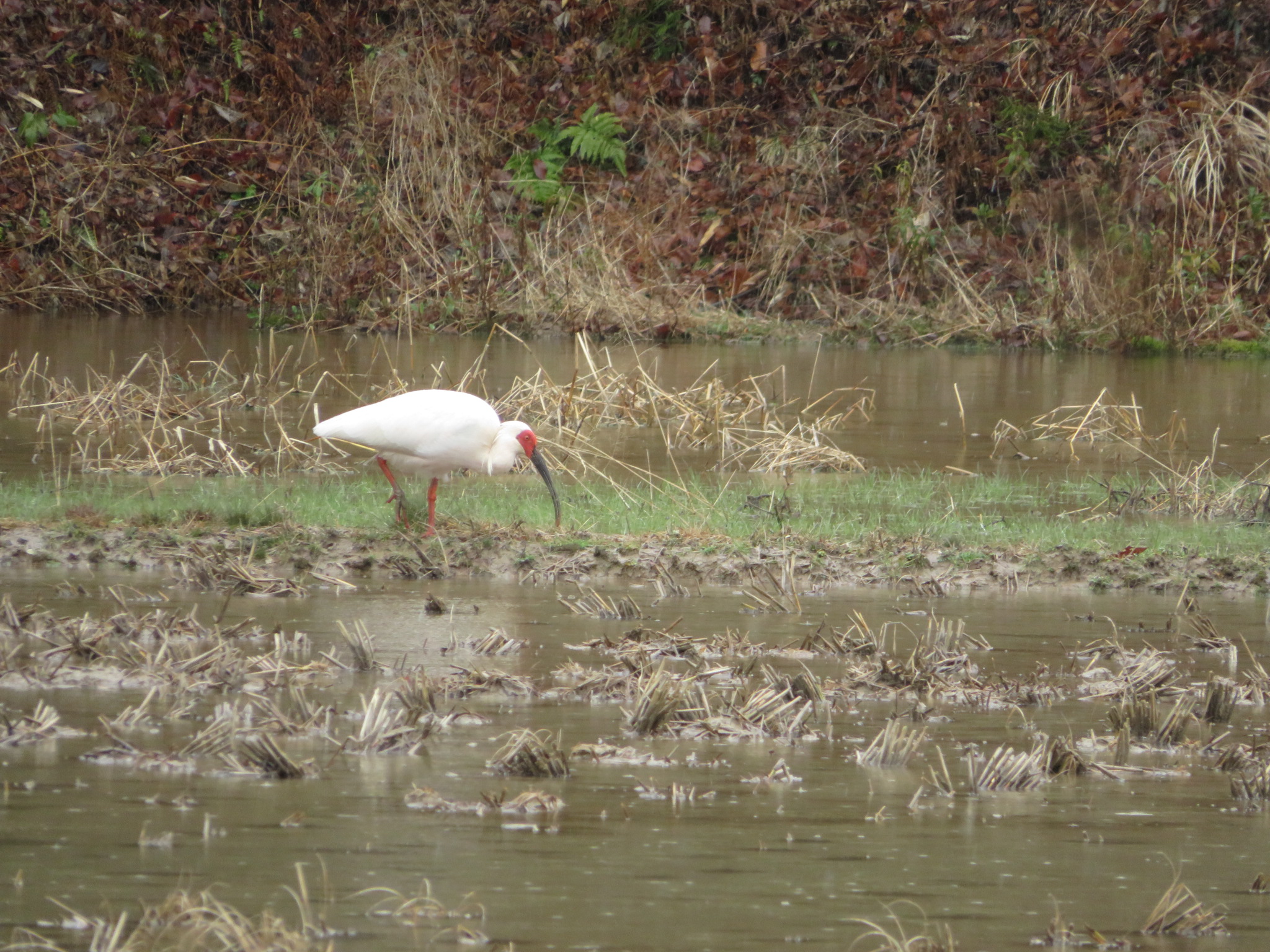 By the autumn of 2016, there were over 100 birds living in the wild on Sadogashima. These are a mixture of captive-bred birds that have been released, and also wild-bred birds. The re-introduced population on Sado is slowly, but steadily increasing.
By the autumn of 2016, there were over 100 birds living in the wild on Sadogashima. These are a mixture of captive-bred birds that have been released, and also wild-bred birds. The re-introduced population on Sado is slowly, but steadily increasing.
In China, there are now well over 1,000 birds living in and around Yangxian in central Shaanxi Province.
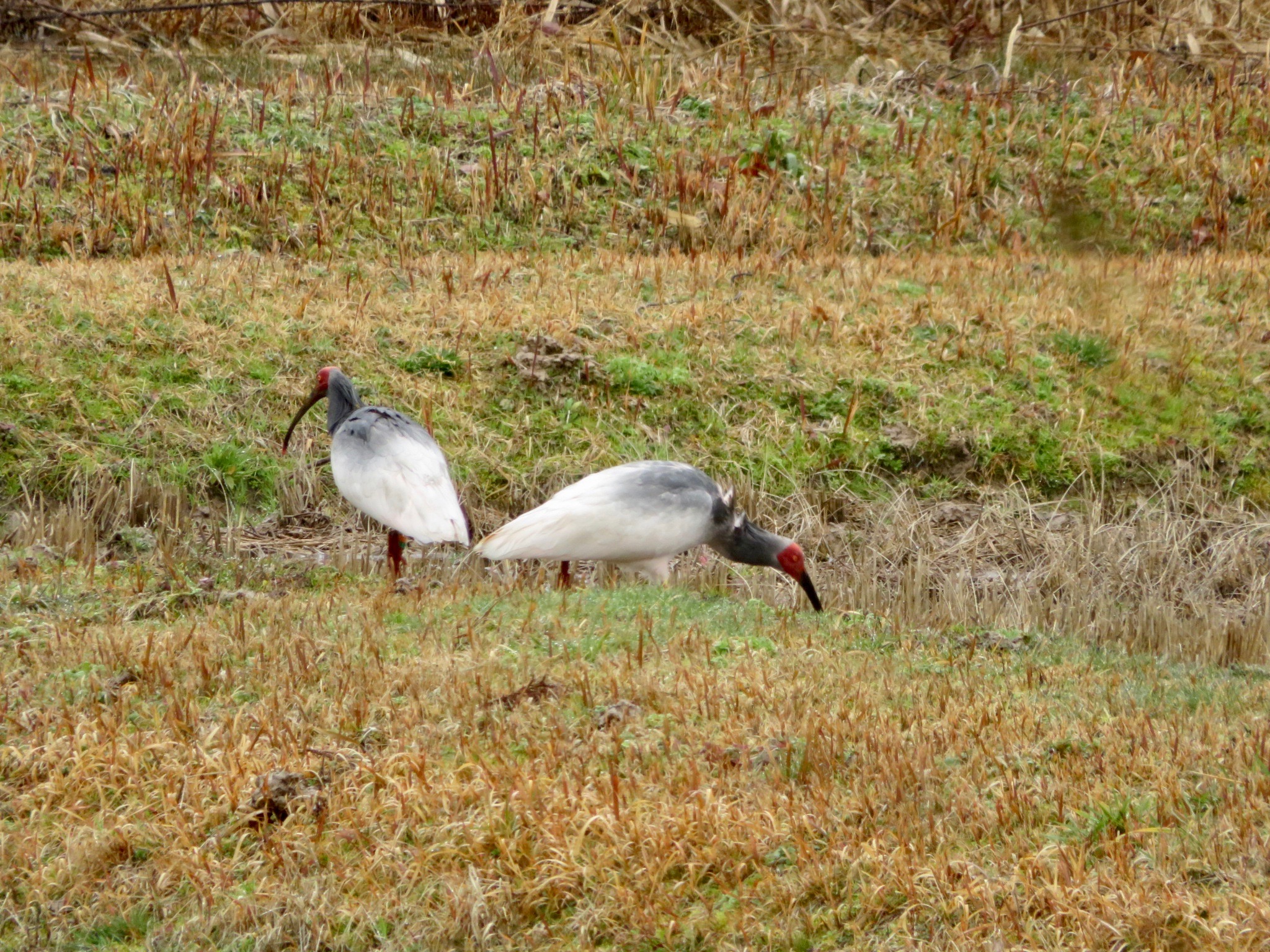 On Sado there is a breeding facility in Niibo, and birds which have been released from there can often be found feeding in the rice paddies nearby. However, they are wary birds and are easily flushed, even at a distance. The best way to observe them is to drive slowly, stop and observe from your vehicle.
On Sado there is a breeding facility in Niibo, and birds which have been released from there can often be found feeding in the rice paddies nearby. However, they are wary birds and are easily flushed, even at a distance. The best way to observe them is to drive slowly, stop and observe from your vehicle.
During the winter months they gather into small flocks and forage and roost together. This habit makes them easier to locate than the single birds or pairs that are widely scattered during the summer breeding season.
Toki Terrace トキのテラス
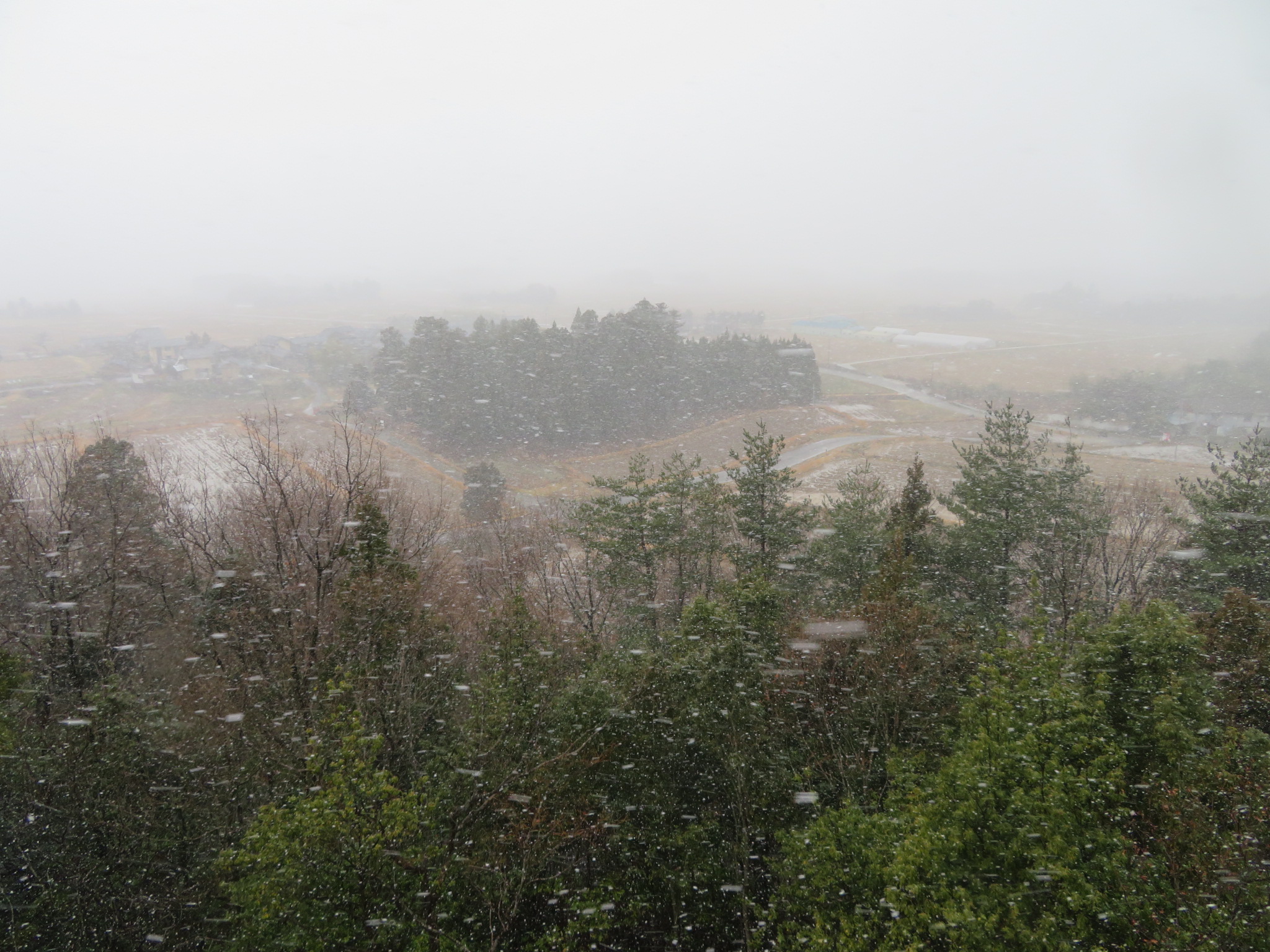 Toki Terrace (Map: 38.018309, 138.449414), in Niiboshomyoji village, is located near the Crested Ibis Conservation Centre (Map: 38.019239, 138.453136), is free of admission, and provides another spot from which to search for ibis.
Toki Terrace (Map: 38.018309, 138.449414), in Niiboshomyoji village, is located near the Crested Ibis Conservation Centre (Map: 38.019239, 138.453136), is free of admission, and provides another spot from which to search for ibis.
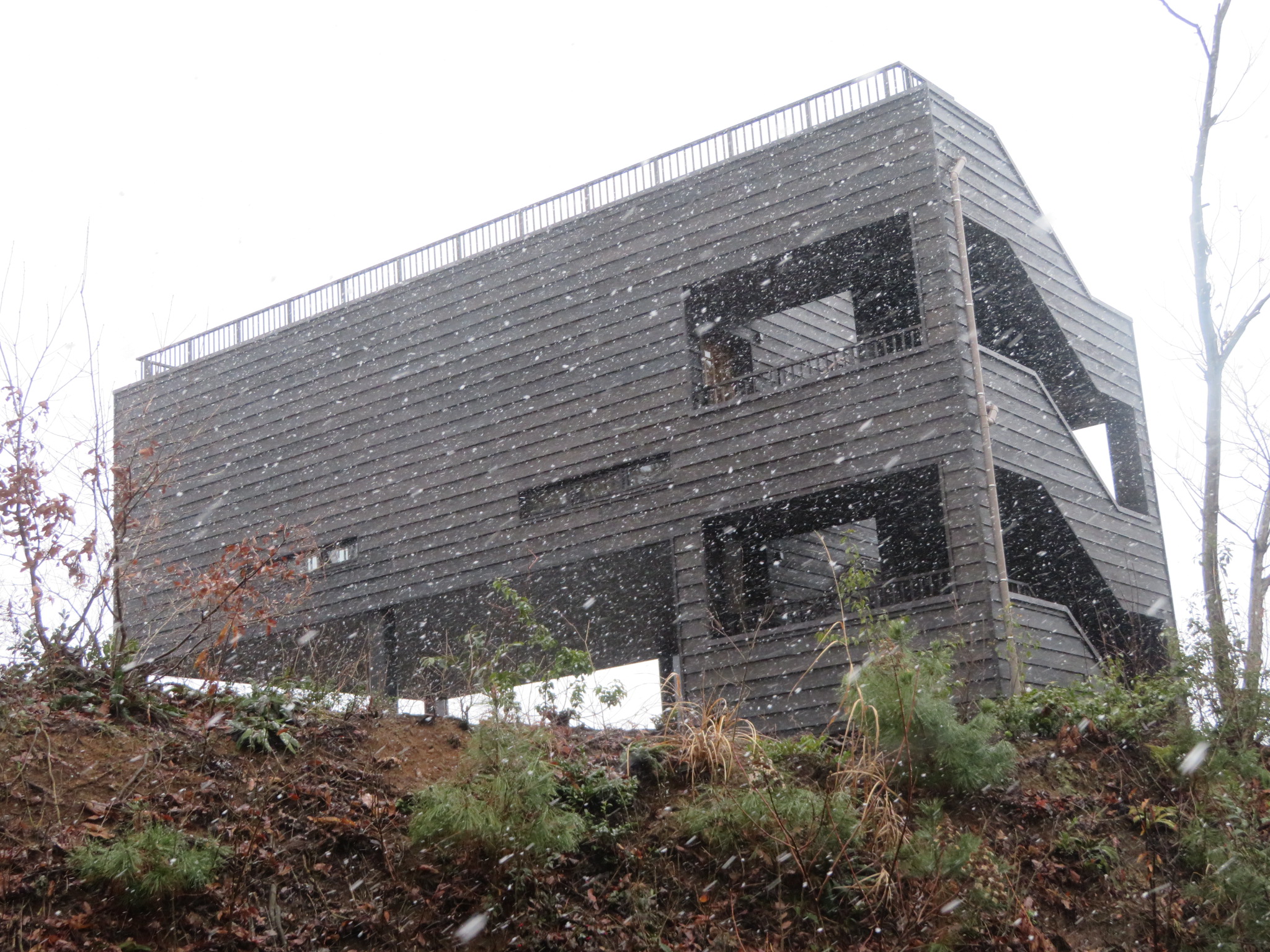 This two-story building has a rooftop vantage point from where, especially during the winter, you have a good chance of seeing ibis as they fly around the nearby farmland.
This two-story building has a rooftop vantage point from where, especially during the winter, you have a good chance of seeing ibis as they fly around the nearby farmland.
The Crested Ibis Conservation Centre (Tel: 0259-22-2445) is open from 09:00–16:30 from 1 April to 30 November, and from 09:00–15:00 from 1 December to 30 March. The centre may occasionally close if, for example, there is a heavy snowfall or if there is an outbreak of avian influenza in the area.
In addition to tracking down ibis, during the late autumn and winter a good place on Sadogashima to look for waterfowl is Kamo-ko, in Ryotsu.
This large lake, which drains into the sea, is the haunt of large numbers of ducks and gulls during the winter season: Goosander, Eastern Spot-billed Duck, Mallard, Northern Pintail, Common Goldeneye, Eurasian Teal, Common Pochard and Tufted Duck to name a few, and several species of gulls also. Japanese Green Pheasant can be found in the rough fringes around the lake.
There are also large areas of farmland and the mountainsides are mostly forested.
Toki no Mori-koen http://tokinotayori.com/tokipark/ (in Japanese)
Tel: 0259-22-4123
Open: 08:30–17:00 Entrance fee ¥400
This centre, which keeps captive ibis (of various species, but mostly Crested Ibis) in large cages as part of a breeding program, is closed on Monday between December and February (or Tuesday if Monday is a public holiday). It also has exhibitions, photographs and toilets and parking facilities.
https://www.jnto.go.jp/eng/regional/niigata/sadogasima.html
Ferry information: http://www.sadokisen.co.jp/language/en/
Access:
Access to the island is basically via the Niigata–Ryotsu car ferry, and there are car hire companies near to the ferry terminal in Ryotsu Port. There are additional ports serving high-speed car ferries and jetfoils, but Ryotsu is the most convenient. There are public buses on the island, and no shortage of accommodation, from business hotels to hot-spring ryokan, at a range of prices.
As well as planes and shinkansen trains, there are also night buses between Tokyo/Osaka and Niigata City, which are much cheaper than trains.
Niigata Kotsu: http://www.niigata-kotsu.co.jp/kengaikousoku/index.shtml
Willer Express: http://willerexpress.com/en/ (in English)
© 2021 Mark Brazil & Chris Cook
Last updated: 20210930

